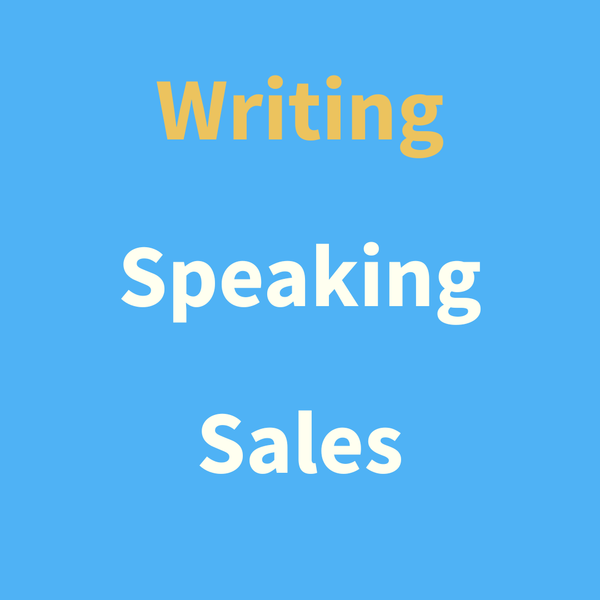The 2 Core Pillars of Effective Copy
On copywriting basics...

Here are 2 fundamental pillars of copywriting, that even after 10+ years of writing and selling ~£4M worth of digital products, services and physical products, helped me enormously.
Taken from and abridged from the free 5 Hour Copywriting Masterclass from Copy That! on YouTube, which you can watch here.
What Copy CANNOT Do
Copywriting cannot make a bad product or service good.
We are channelling the ethical idea that what we are selling to our audience is valuable to them and genuinely solves a problem that they have.
The Purpose Of Copy
To get as many people to take an action that you want (click or buy something - we’ll also refer to this as attention or money) from the audience that is being driven to that medium (ad, email, landing page etc.) and maximise conversion rates and sales.
How Do People Make Buying Decisions?
Before we even write our first word, let’s briefly talk about 5 reasons that will influence whether someone does or does not give you attention or money.
- Our brains are wired to categorise things immediately: In our case, someone reading our copy, line by line will categorise this as “This interests me.” or “Next…”
- The longer we take to make decisions, the less confident we are about them: Good copy will promote taking action now through something called “scarcity”, rather than delaying, because copywriters know it’s highly unlikely people will “come back later.”
- We rely on “Herd Mentality” more than we’d like to admit: A referral from a friend, the most reviewed product on Amazon, the latest fad from an influencer.
- ‘Logic’ is secondary.
- Decision making is based on emotion.
These 5 points combine to form one simple idea…
You want to “join the conversation that’s already happening in their head.”
Here’s an example:
Mary is browsing Facebook thinking about how she’s only got 2 months before her family holiday.
She's feeling self conscious and anxious because she knows she is 10kg overweight and worries about what she will look like by the pool in her bikini.
She knows she needs to go on a diet, but she’s busy with her 2 year old daughter, can’t get to the gym, and has already tried the keto diet.
She comes across a Facebook ad that says:
💪Lose 5kg a month without going to the gym.
Eat what you like with your family and then use this 20 minute a week plan to meal prep for the rest of the time.
Works even if you’ve tried high protein, low carb, keto, vegetarian or Herbalife…
[TESTIMONIAL] Susan: “I can’t believe how easy it was to do, I’ve got 3 kids and I lost 20kg in just under 4 months. I can’t recommend that [PRODUCT NAME] enough!”
[PICTURE] Susan Before and After
<FIND OUT MORE>
How likely is it that Mary clicks this ad to find out more?
Our ad has joined the conversation she’s already having in her head.
The 2 Stages Pillars of Effective Copy That Gets People To Give You Money (And Get What They Want)
- Pillar 1: Knowing Your Audience
- Pillar 2: The Rule Of One (RIOA)
Pillar 1: Know your Audience
The first part of ‘joining the conversation’ in our audience’s head, is knowing what they’re talking about.
We call this, their level of awareness.
There are 5 Stages of Awareness as identified by Eugene Schwartz, who many of the greatest copywriters past and present credit with helping them write compelling copy.
Taken from Chapter 2 of his book “Breakthrough Advertising”
Why do we need to know this? Our job is to move our prospect through those stages of awareness to take an action (click or buy)
The more “aware” a prospect is of our product or service, the more likely they are to buy from us.
The 5 Stages of Awareness
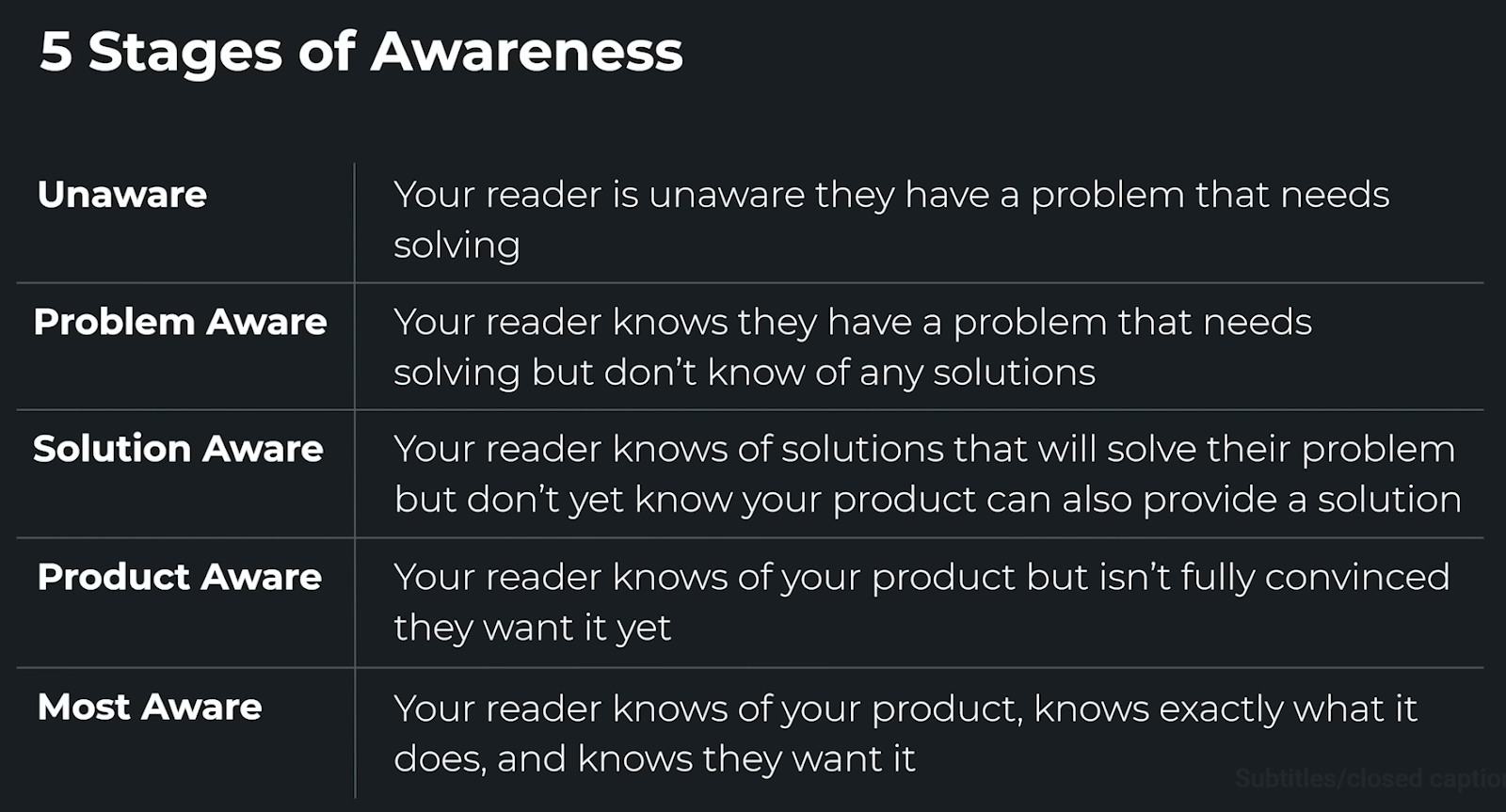
NOTE: You are highly unlikely to write to an audience who is unaware.
Copywriting is an exercise in moving your audience through the stages of awareness.
Knowing what stage your audience is in, comes down to good research.
How does your copy differ based upon what stage they are in?
Copy For The 5 Stages of Awareness
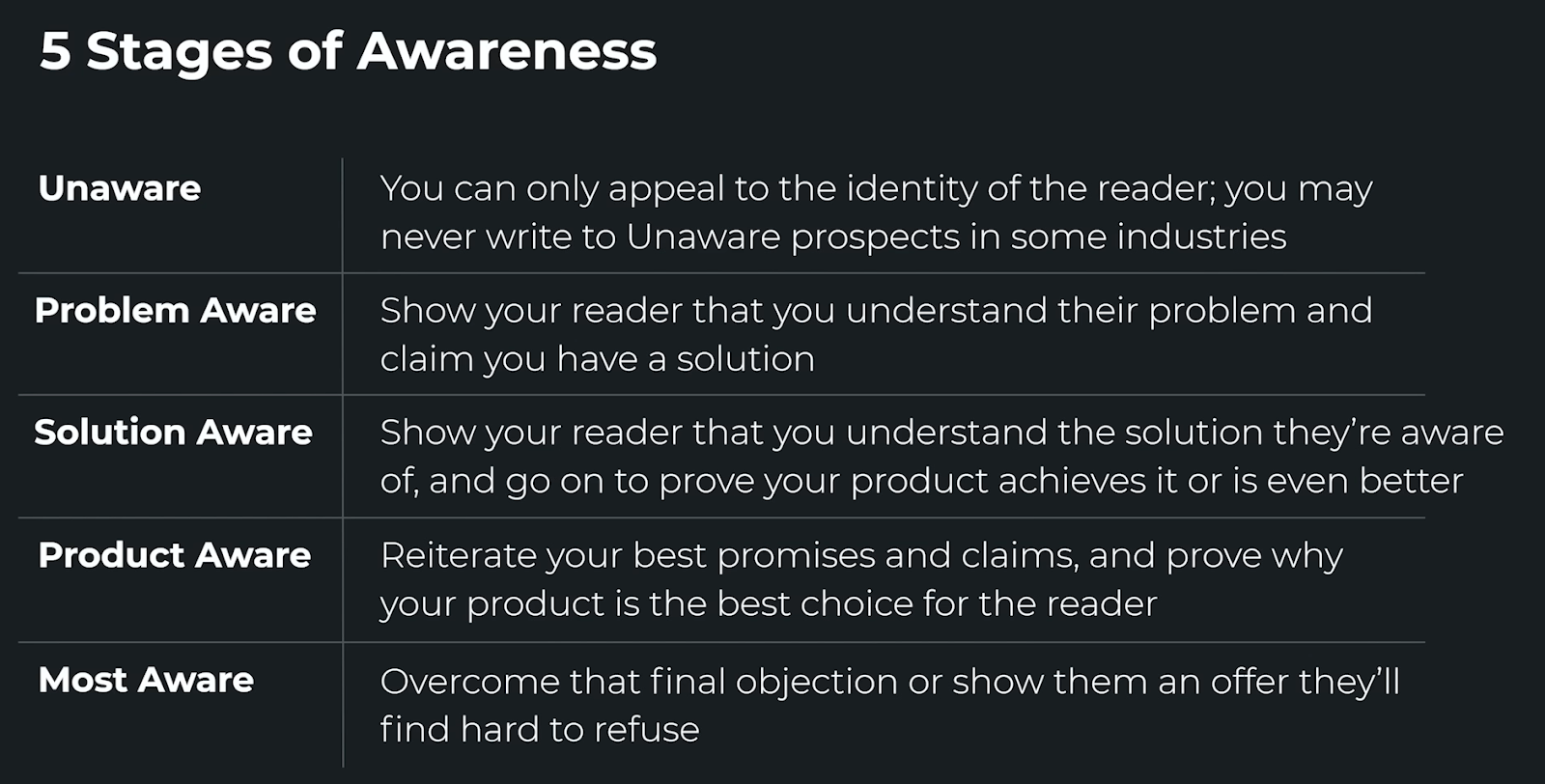
Our copy would begin with the “headline” which is the first thing that our prospect will see.
That could be the headline of an email, the headline of sales or landing page, or an ad. See the examples below, with the headline’s outlined with a green box.
Sales Page
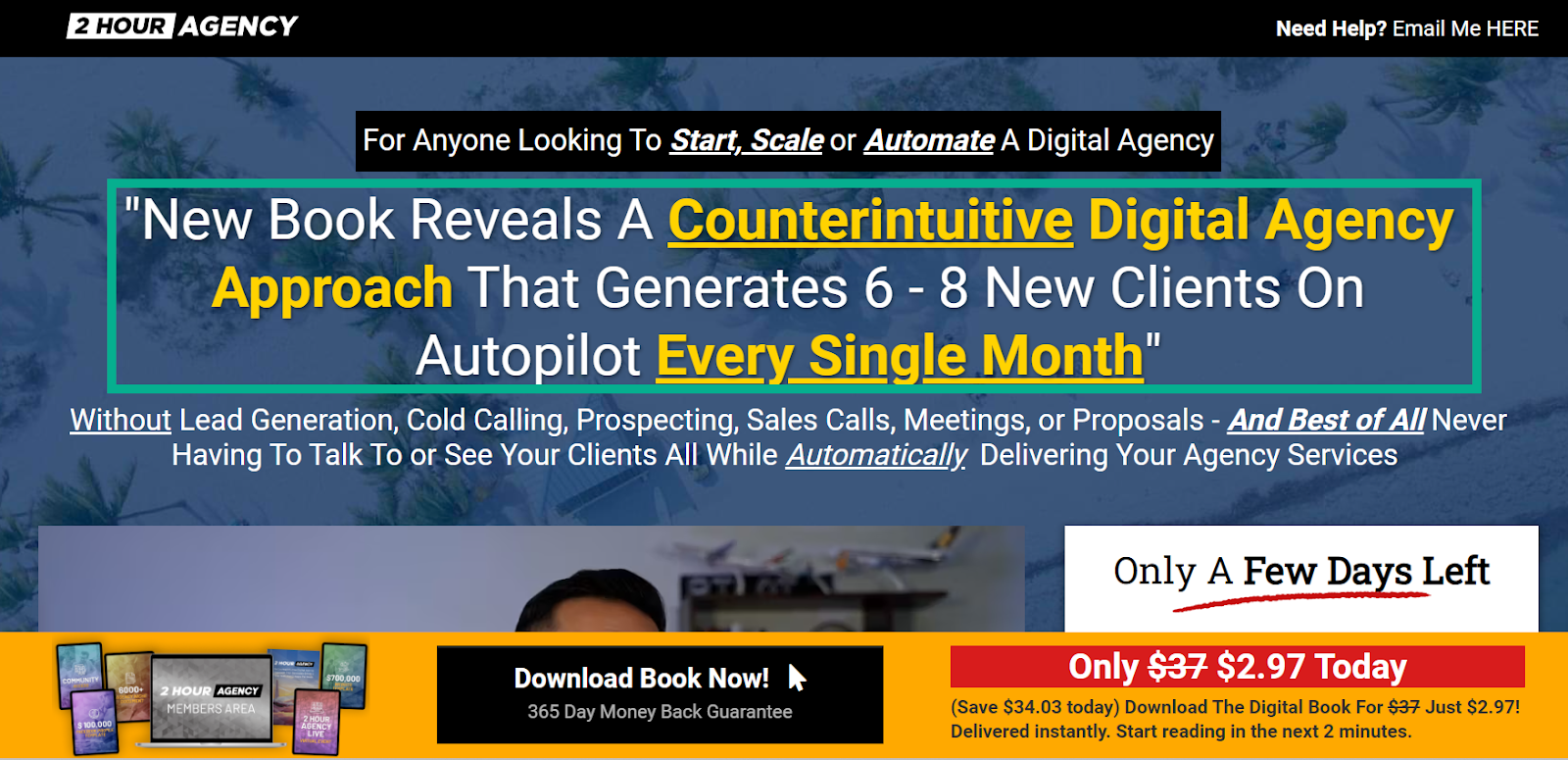

Facebook Ad
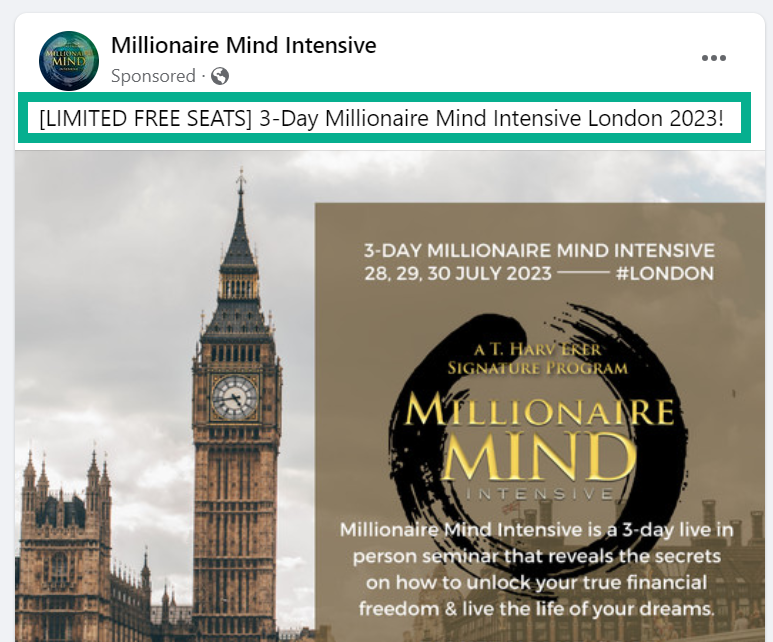
Here’s an example of 5 different headlines for a golf product based on their stage of awareness.
NOTE: I know absolutely nothing about Golf, apart from a mis-spent Summer playing Wii Golf…
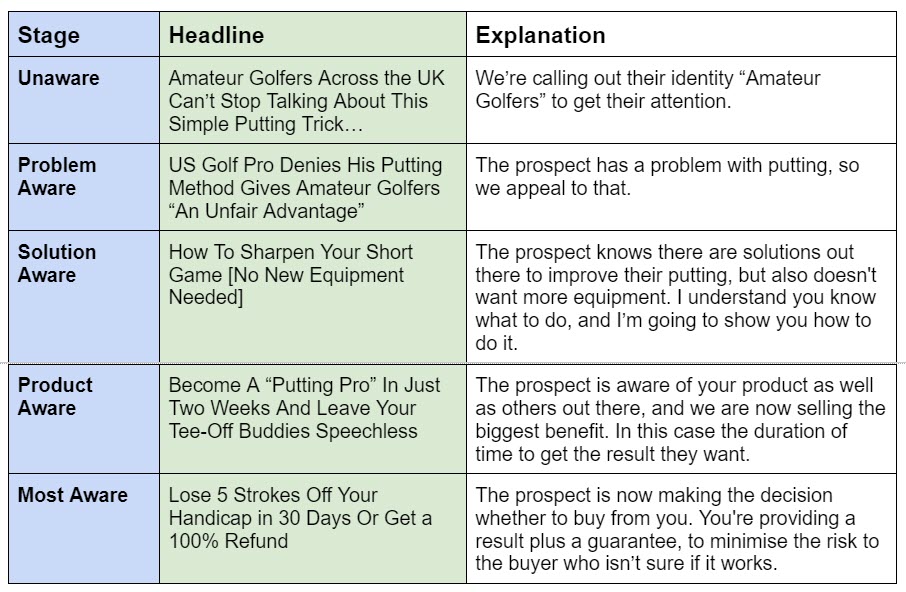
By knowing the stages of awareness, and where our audience is, we can take the “randomness” out of our copy, and move them through the stages of awareness to make a buying decision.
Here’s an example:
For one of our information products, people will watch a video on Youtube about passing interviews.
They are already problem aware, as that’s what brought them to Youtube, perhaps looking for something like “PwC Video Interview”
They watch our video, and become aware that there is a solution, and they could buy that solution from us.
When they click the link at the bottom of the video to come to our sales page, we already know that they are “Solution Aware” , so to “join the conversation in their head” our headline would be based around that solution.

Pillar 2: The Rule Of One (RIOA)
One of the most common mistakes that marketers, business owners, and copywriters make is they try to “appeal to everyone.”
By trying to sell to everyone, you’ll probably ending up selling to no-one.
Because you’re using the Rule Of One (RIOA)
- Reader - One Reader. Make your copy as persuasive as possible for your perfect prospect, rather than mildly interesting and forgettable for everyone who reads it.
- Idea - One Idea. The single core message, and main benefit are you promising that will deliver on your reader’s most intense desire, and how will you deliver this?
- Offer - One Offer. What exactly will your prospect get, what is the cost, and what are your deliverables? Is this a clear picture?
- Action - One Action. The one thing that you want them to do, after they have read your copy.
If you approach your copy like you are selling one offer with one idea to one person, and trying to get them to take one action you will crush your competition.
This is a key idea that top direct response marketing companies use (companies whose results are directly measured against the revenue they generate vs the fees their clients spend/ sell their own products) , year in and year out to sell billions of pounds worth of products from fat loss coffee to anti-arthritis socks.
These are the two core pillars of effective copy:
- The Stages of Awareness
- RIOA
A massive tip of the hat to this 5 Hour Copywriting Masterclass from Copy That!
You can check it out here.


